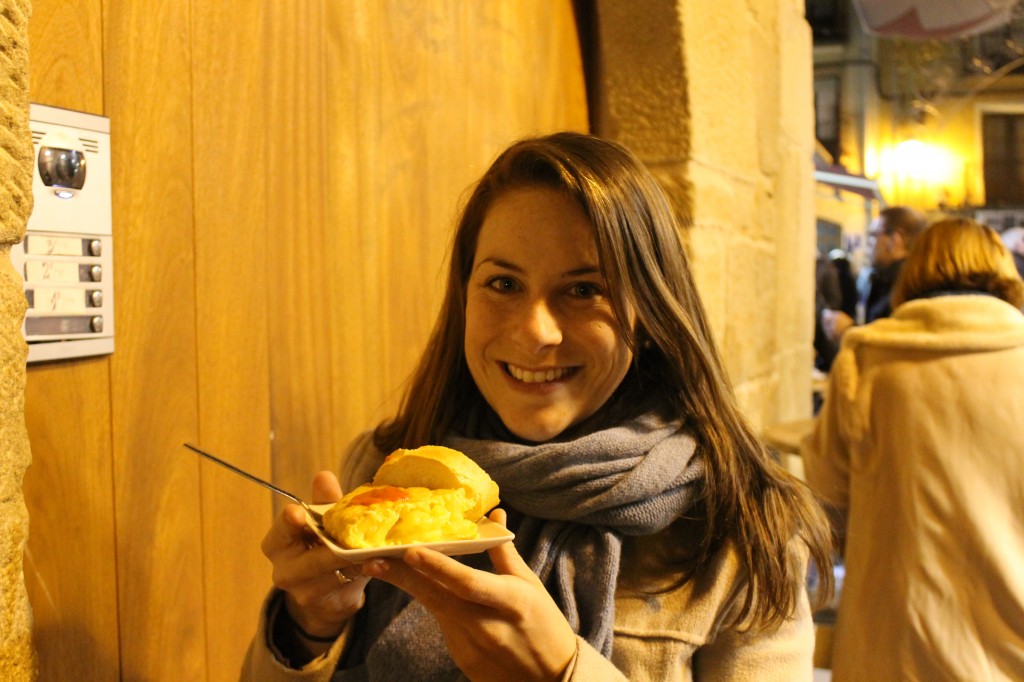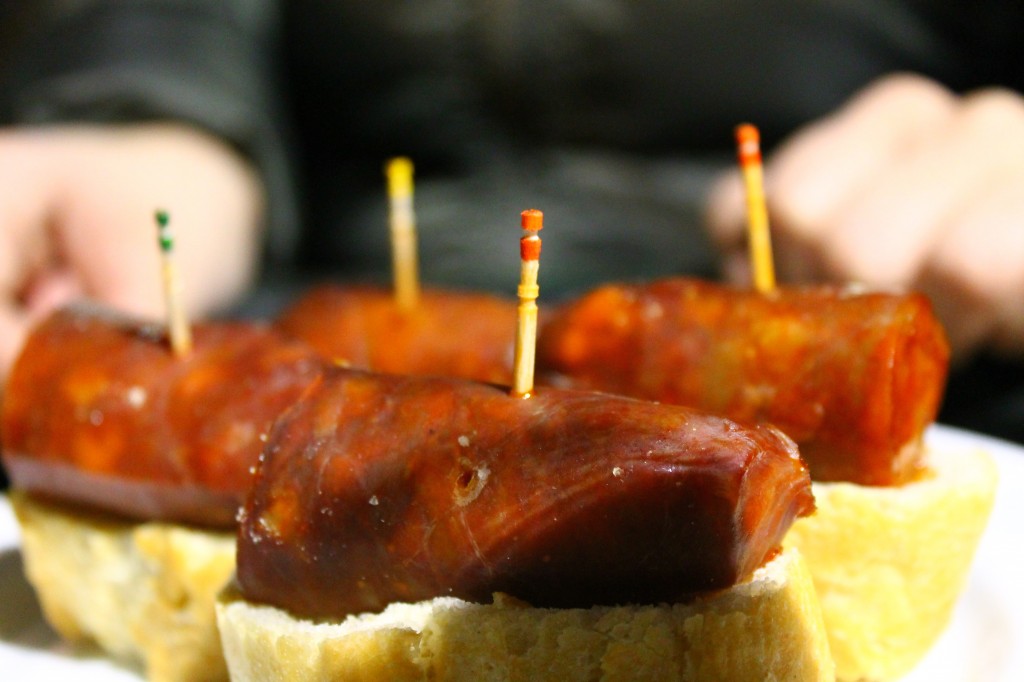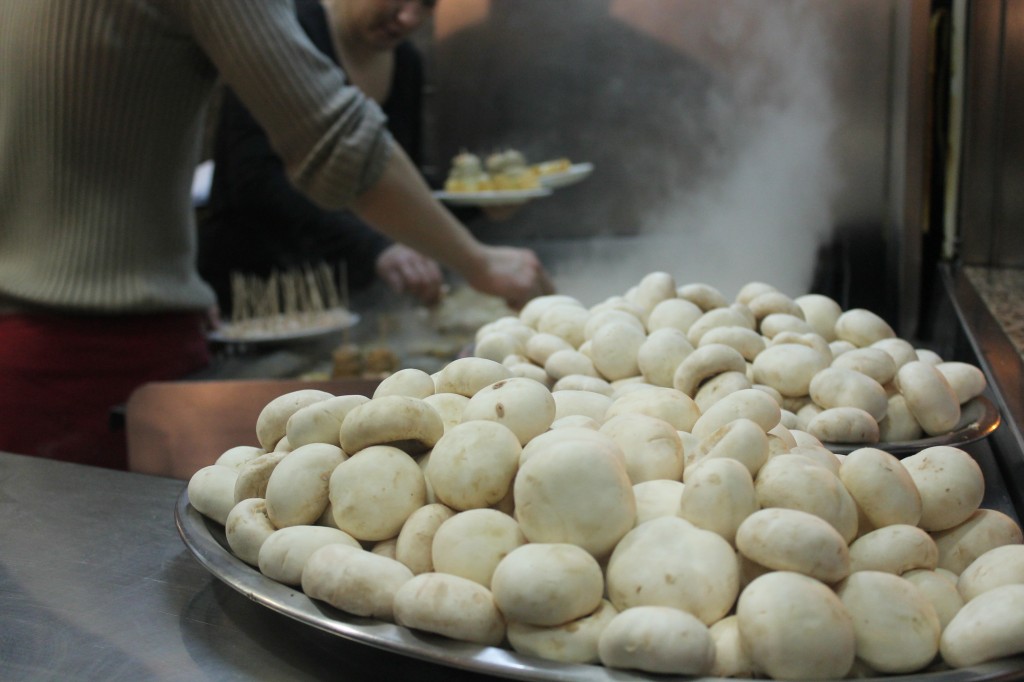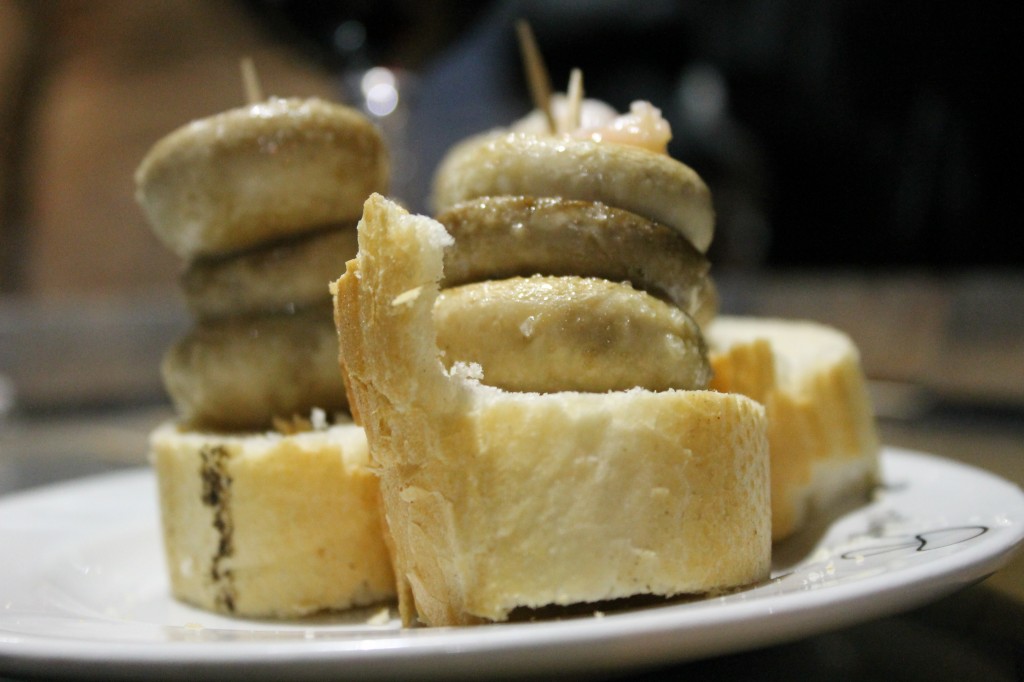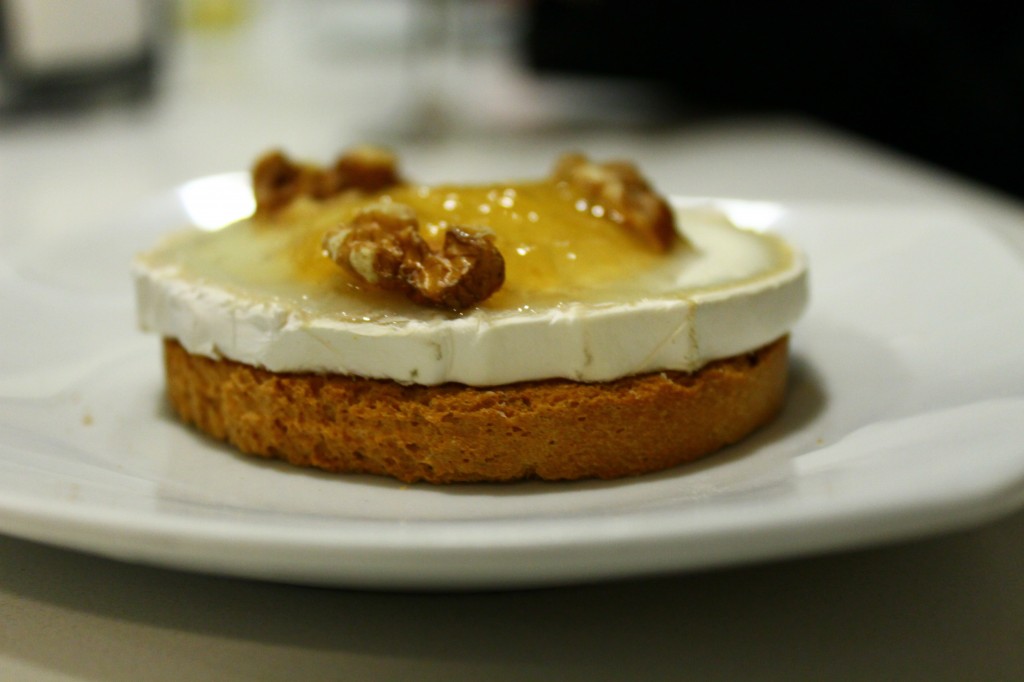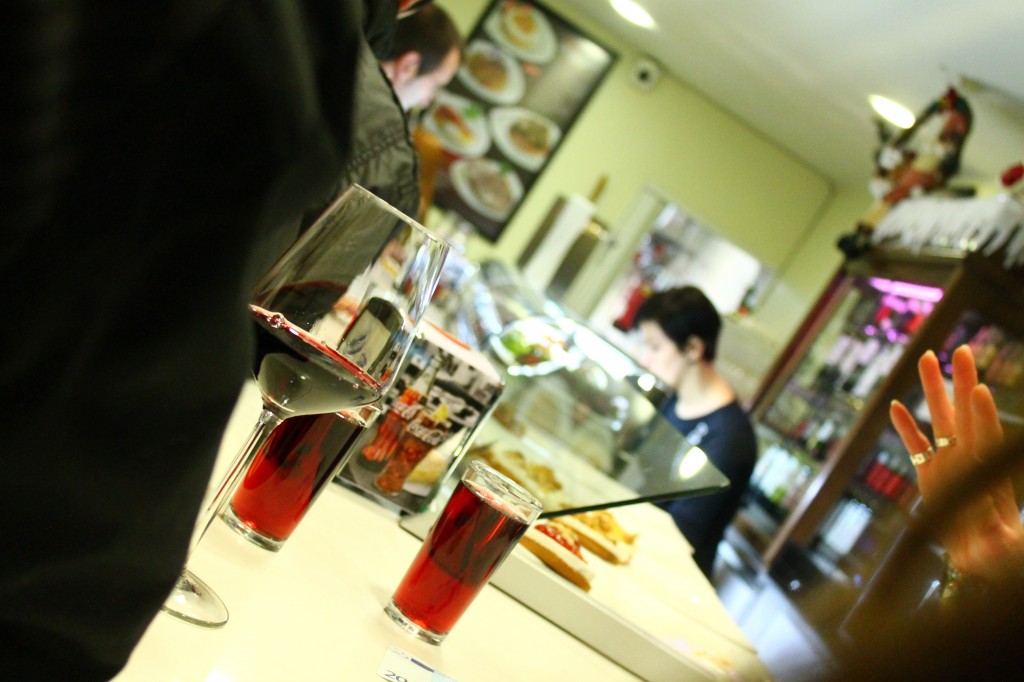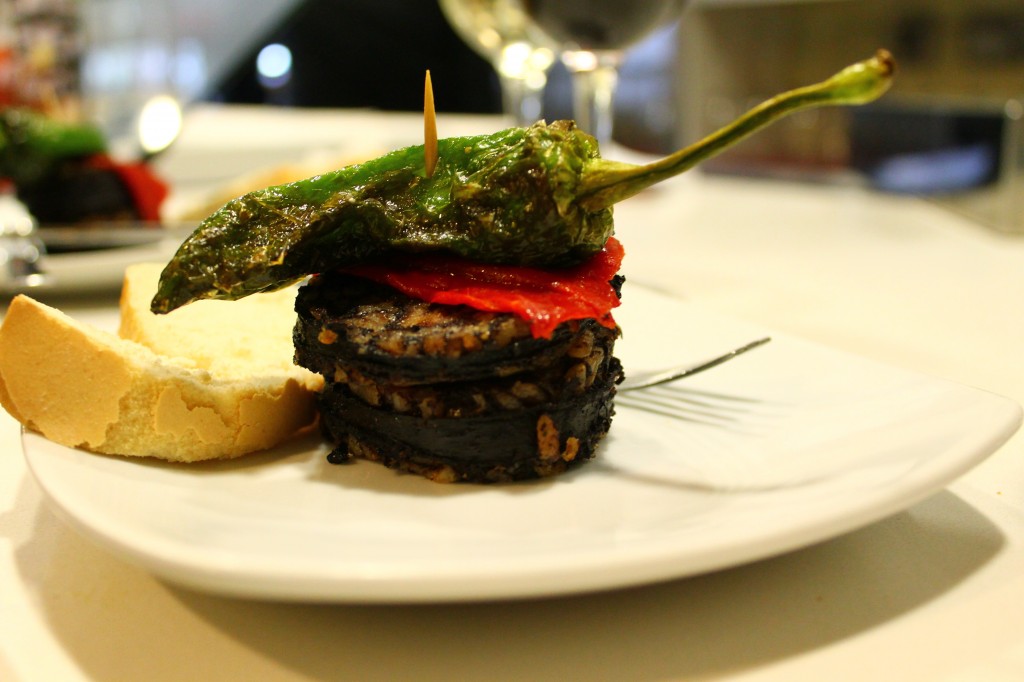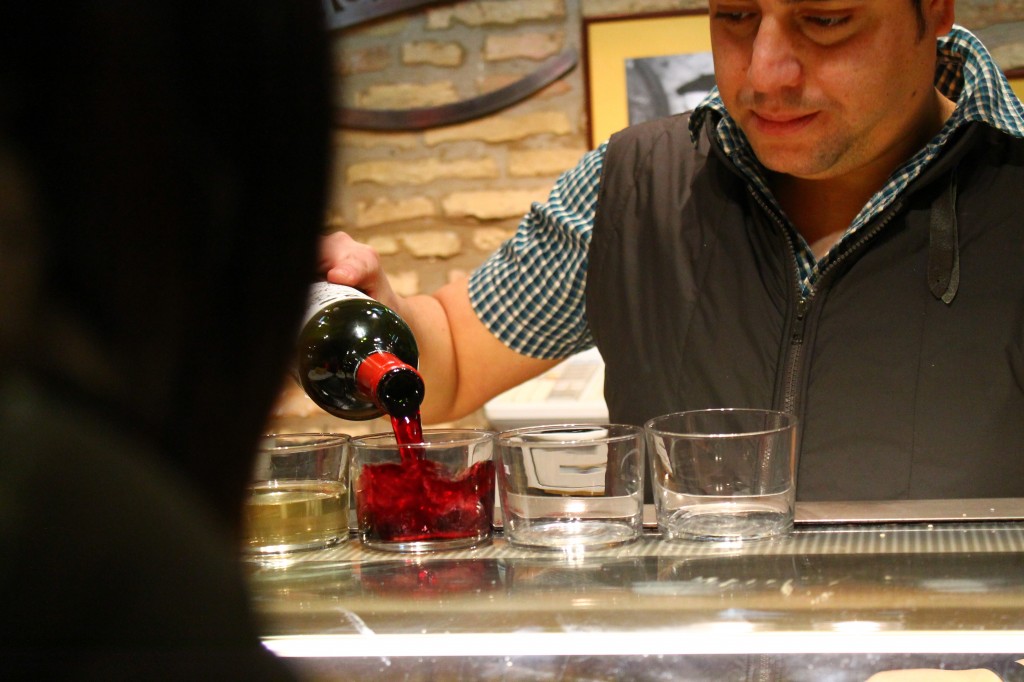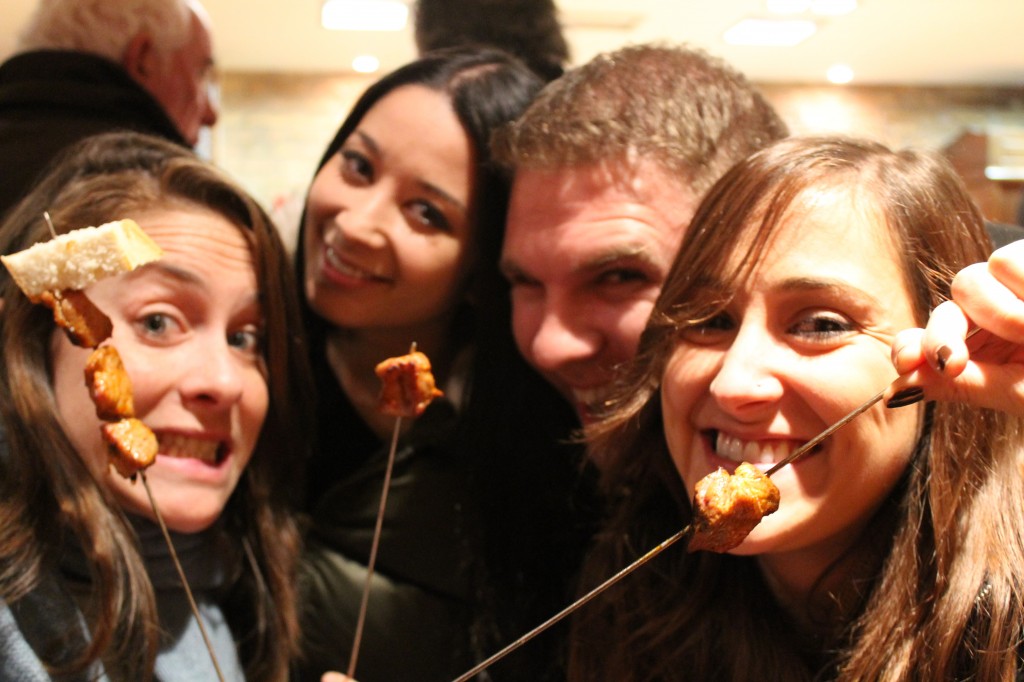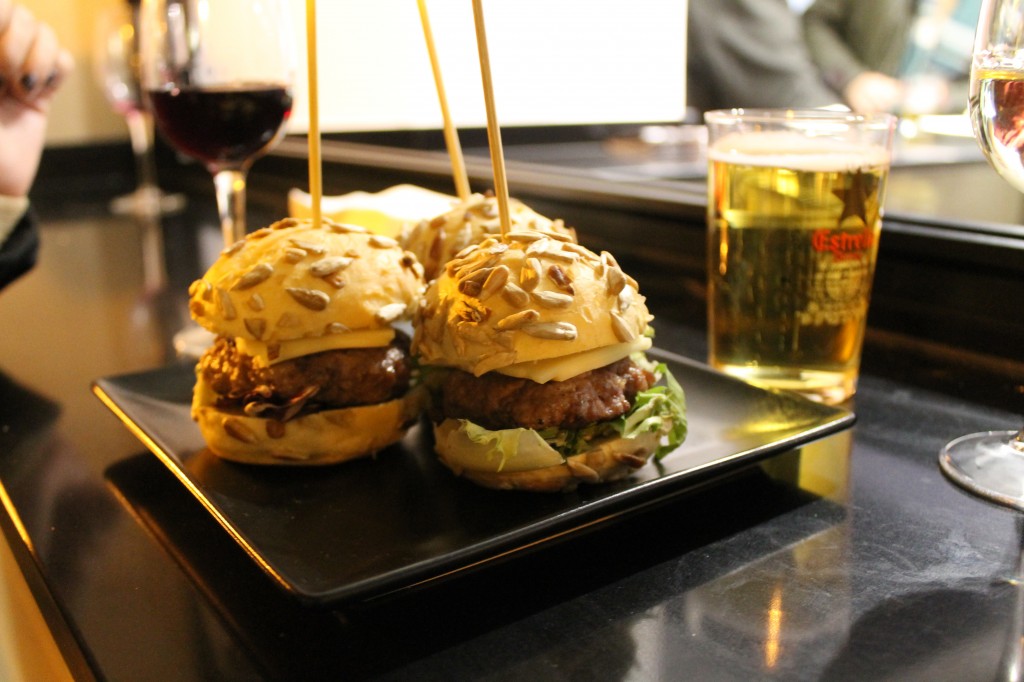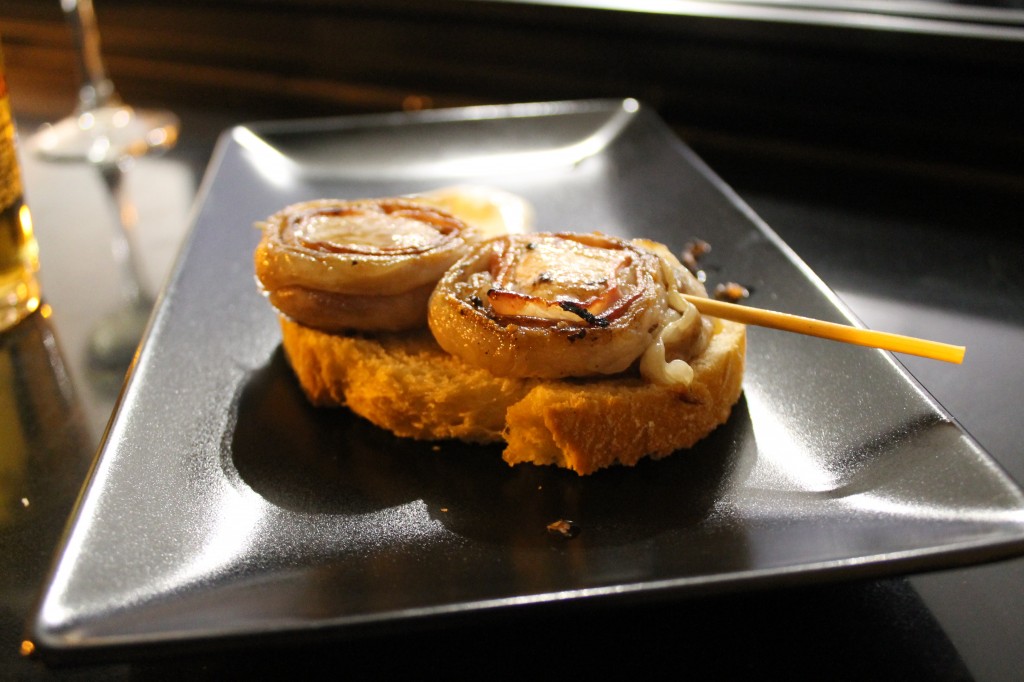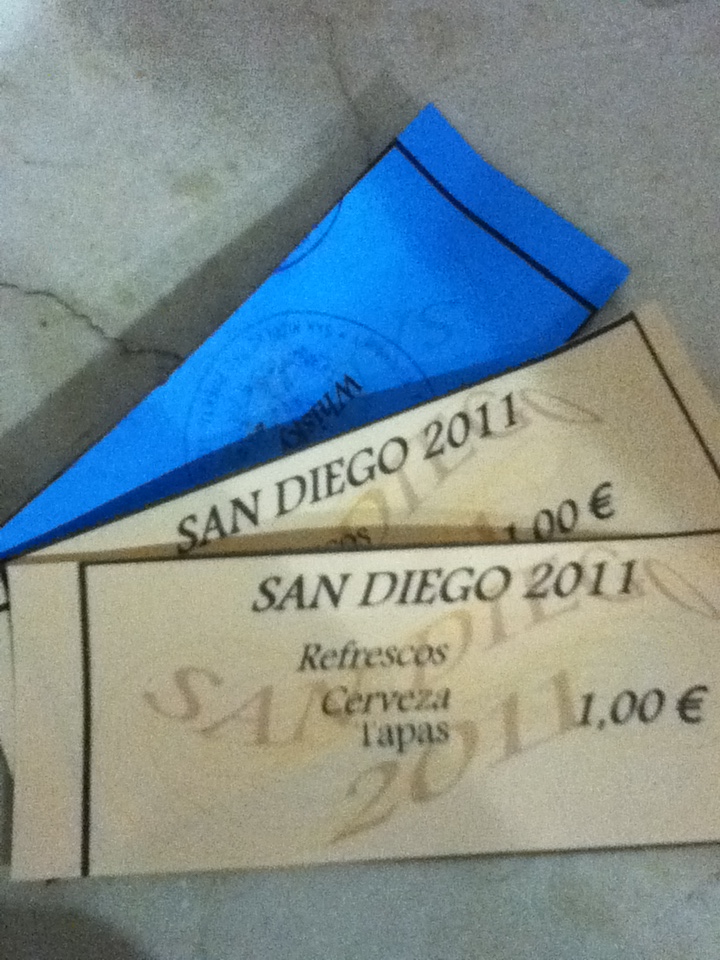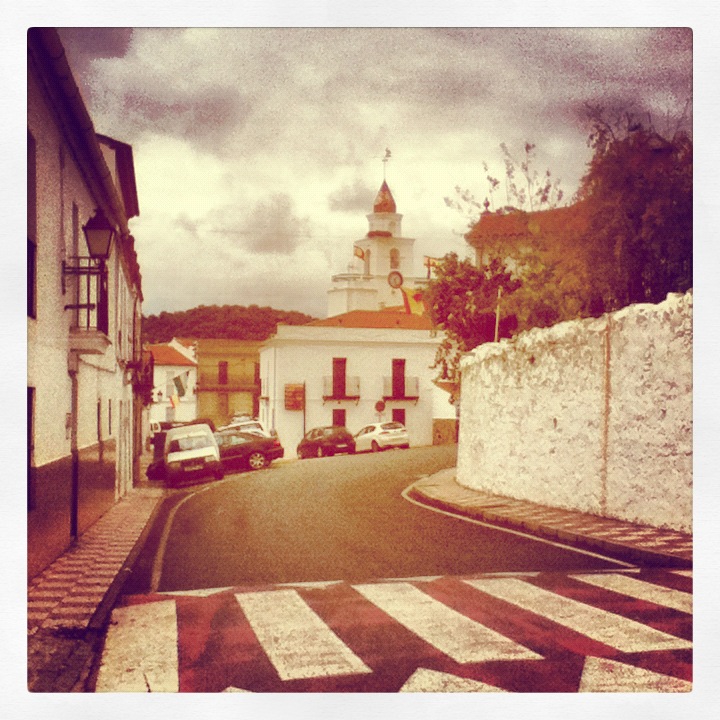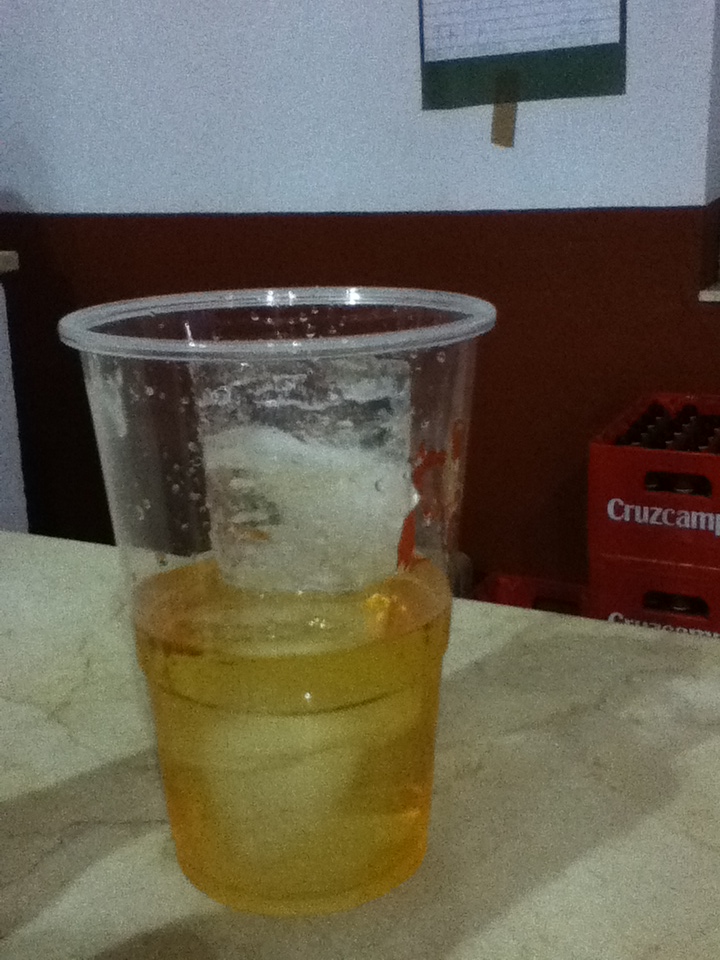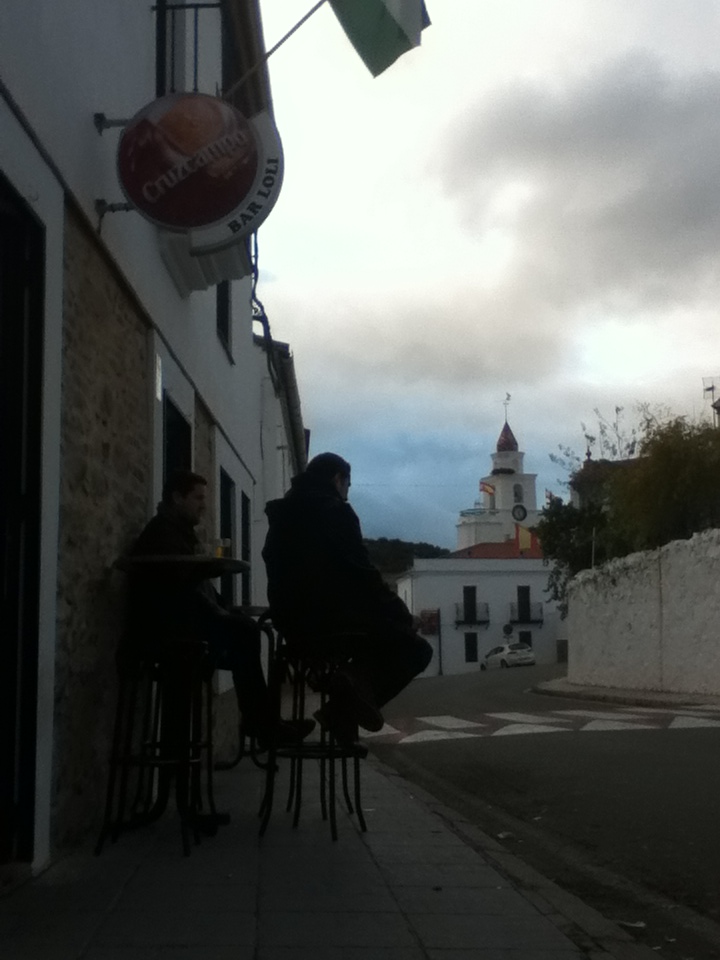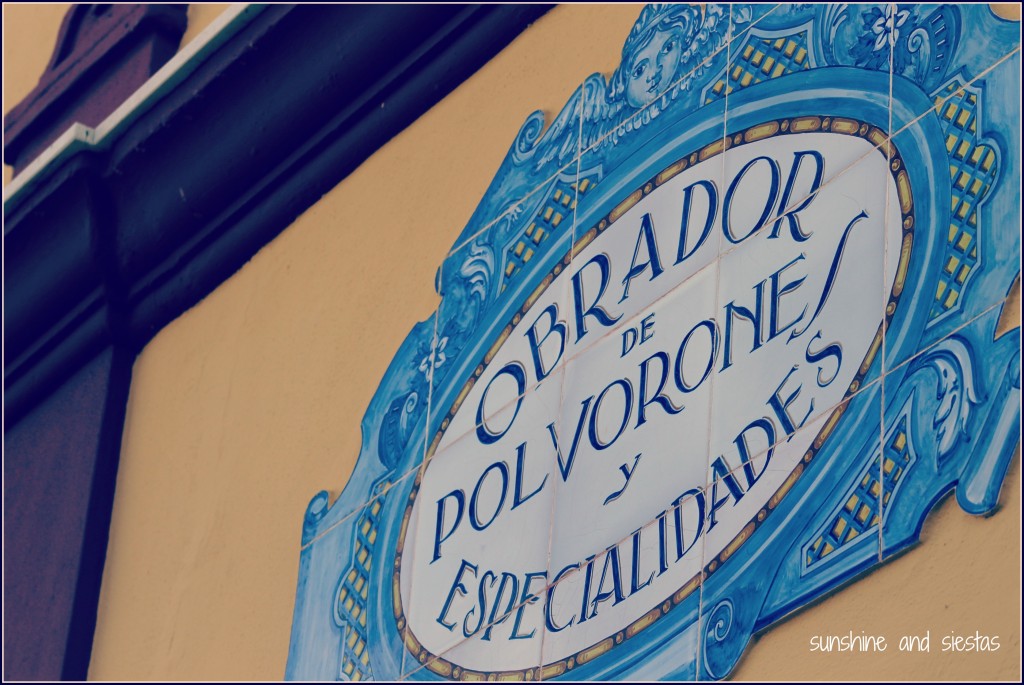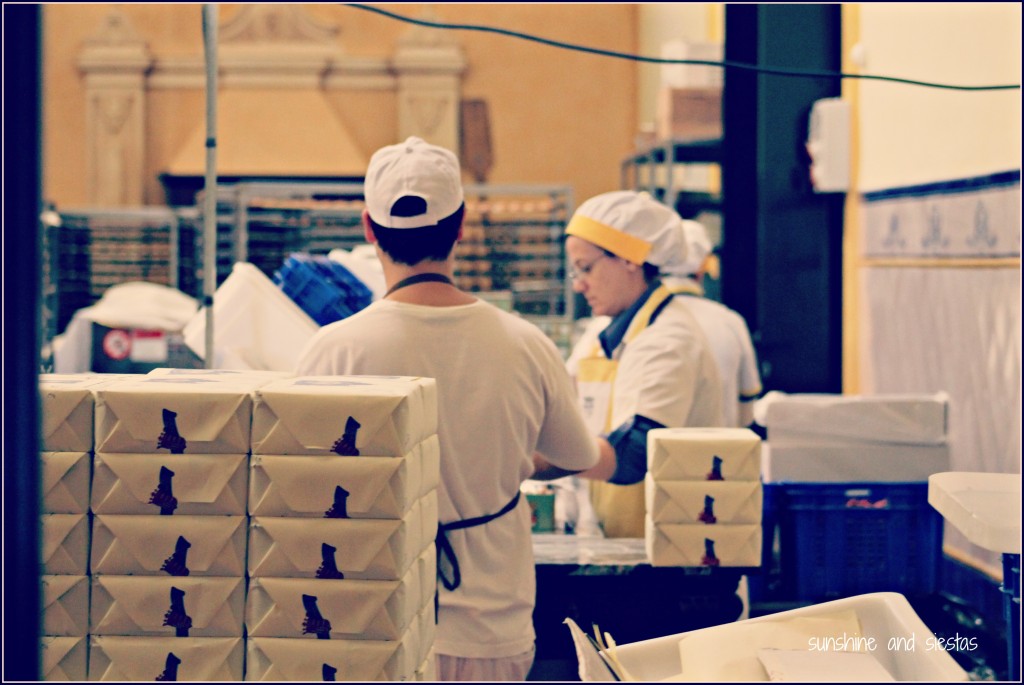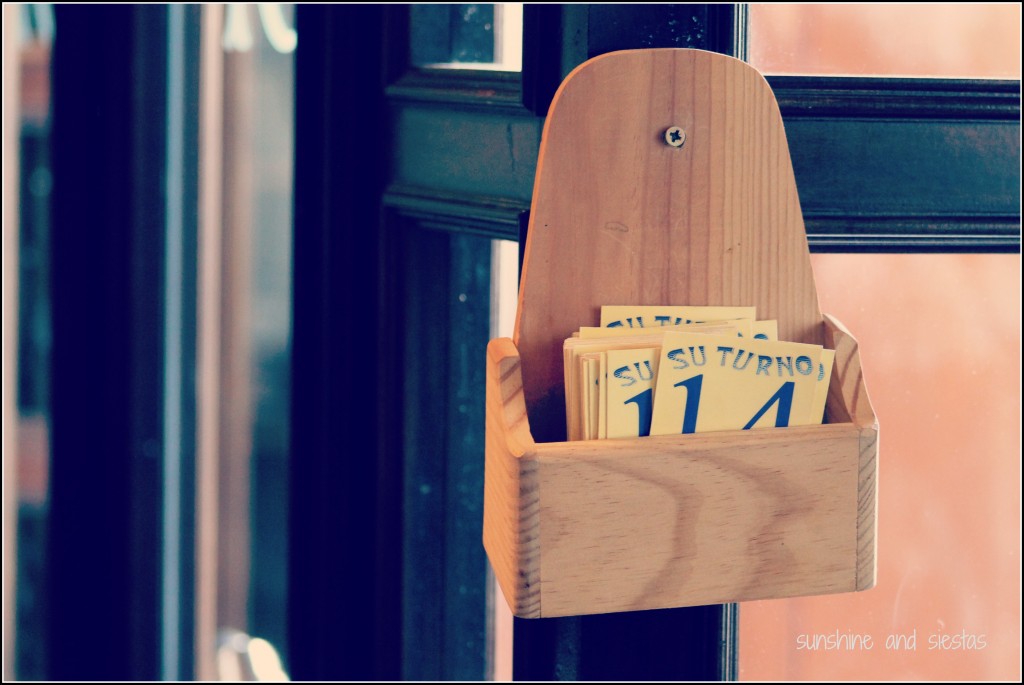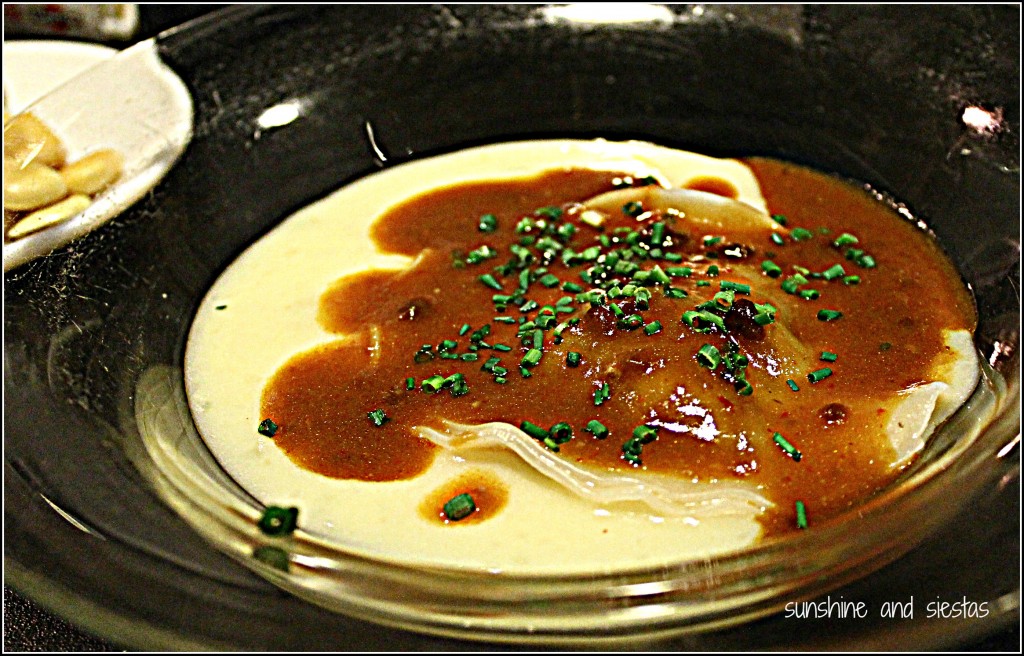When it came to the last region of Spain left to visit, I didn’t have to do much planning: I was in La Rioja, Spain’s wine country, and I was going to drink as much vinate as possible.
But, as any adult knows, moderation is key, as well as stuffing your face to minimize the effects of the garnacha grape that’s been fermented.
One of Logroño’s most famous sites is Calle Laurel. This pedestrian stretch of street in the historic quarter is home to the city’s pintxos – the northern version of a tapa – bars. Being in Logroño on the weekend meant we had plenty to see, do and stuff our faces with, as the average pintxo and glass of house wine ran under 2,50€. As a lover of eating and drinking on the cheap, I felt almost too much at home in Logroño!
Stop One: Pintxo of Tortilla with a Spicy Sauce and glass of tinto: 2,20€
Stop Two: Pintxo de Chorizo and a glass of tinto at Bar Villa Rita, 2,10€
Stop Three: Pintxo of Champi with shrimp and a glass of tinto at Bar Antonio: 2,80€
Stop Four: A Pintxo of Queso de Cabra con confitura de Mermelada, a pintxo of Pimiento Relleno de Setas y Gambas and a glass of tinto: 4,30€
I really just wanted Tana’s morcilla, though…
Stop Five: Meat on a Stick! Pintxo Moruno and glass of red at Páganos: 2,10€
Stop Six: Pintxo of Piruletas de Solomillo con beicon and a beer (noooo more wine!), while my friends snagged the last three mini hamburgers: 3,50€
I’d say we made out like bandits, but we really made out like fatties. We would return to Calle Laurel just once more, instead choosing to try Calle San Juan, where the pintxos were even cheaper and the bars less crowded.
How do you eat while on a trip? Have you ever been to La Rioja?
